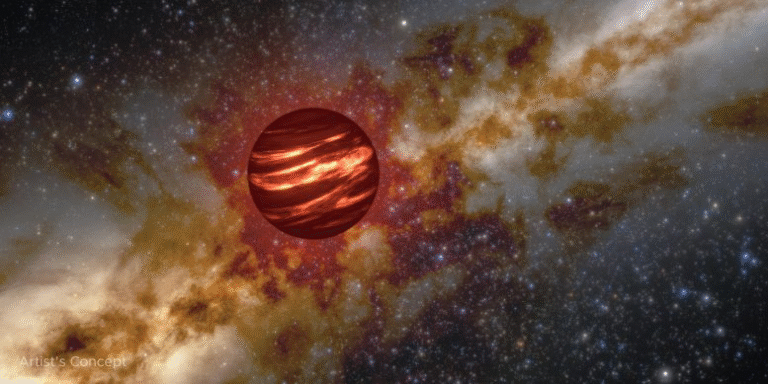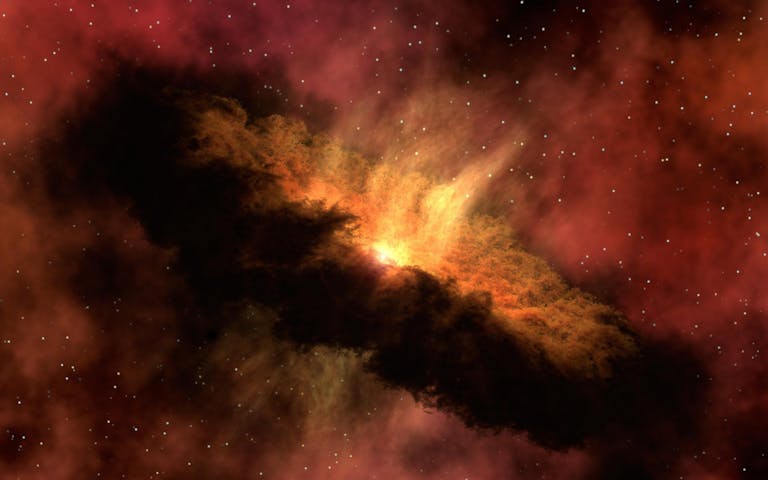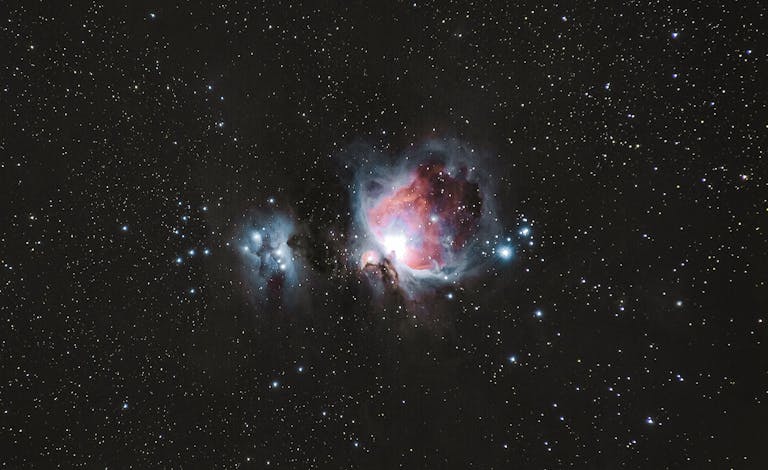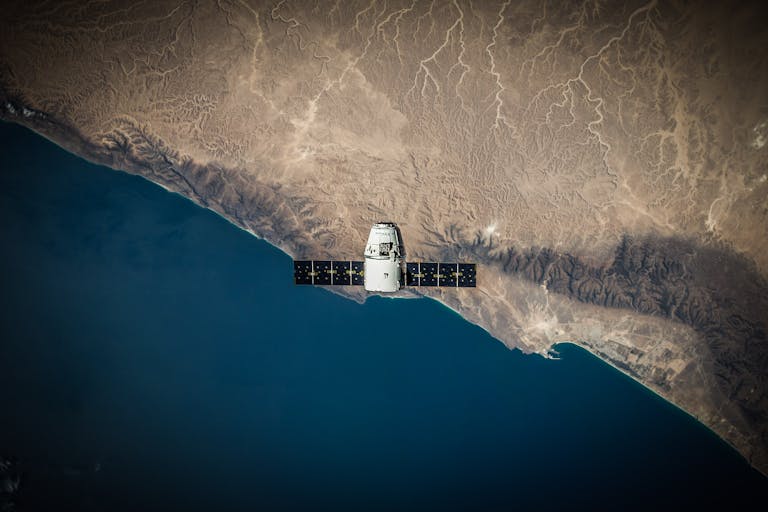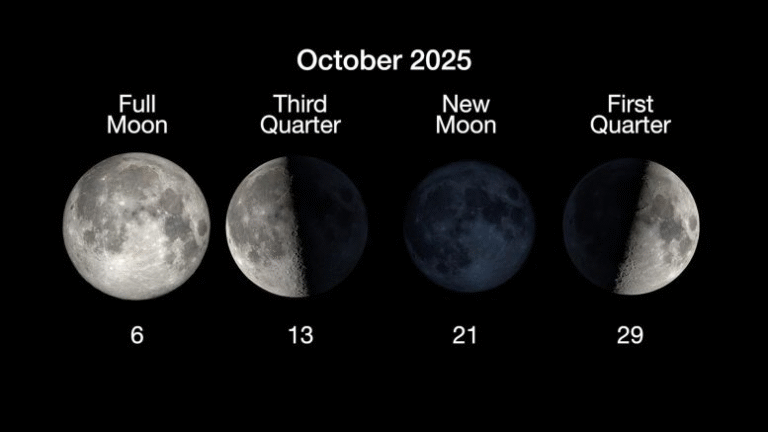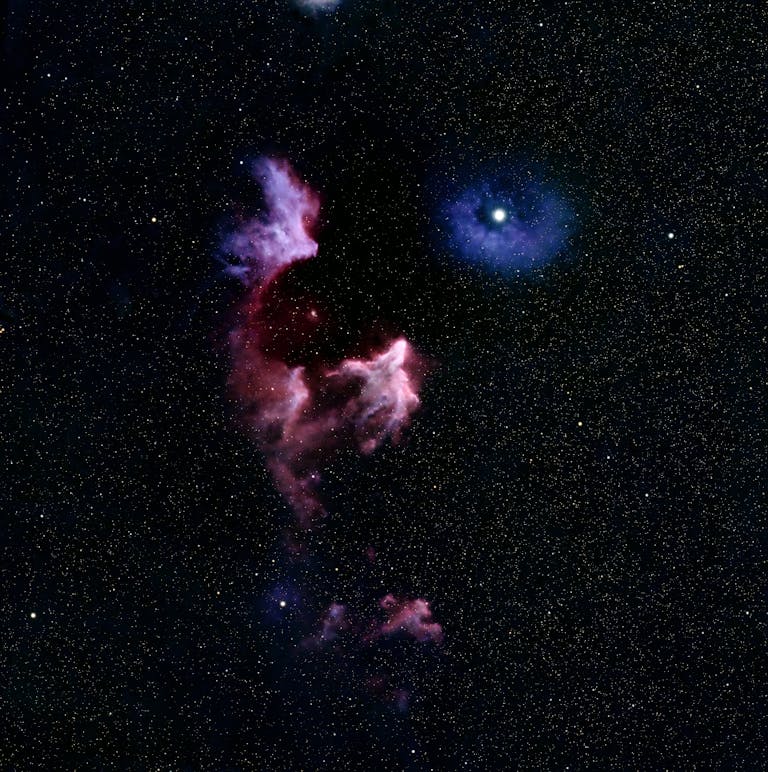Planetary Collisions and Alien Habitability: What Venus and Earth Can Teach Us
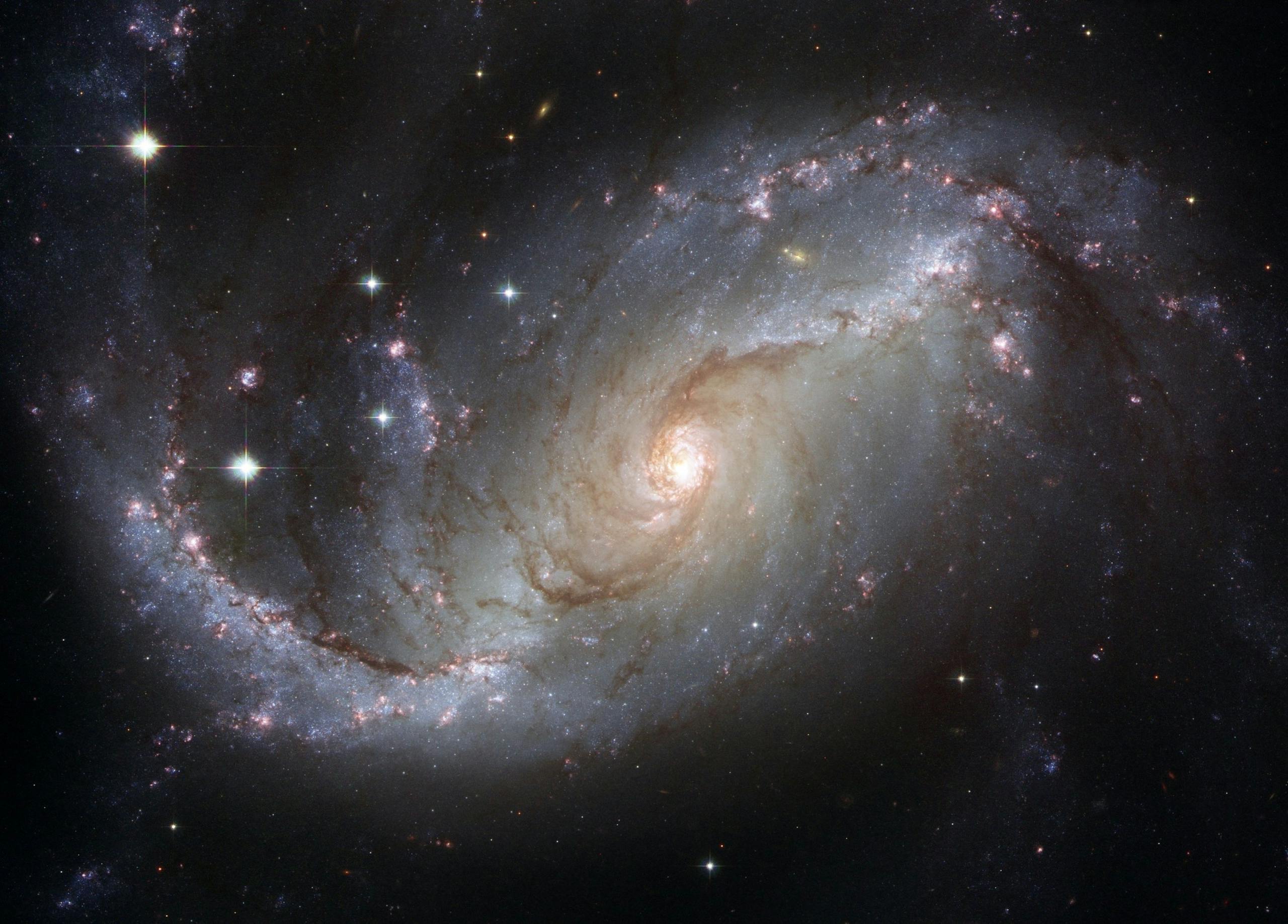
When we think about life beyond Earth, our attention usually goes straight to whether a planet is in the habitable zone, has the right size, or contains water. But a new study highlights something that often gets overlooked: the history of collisions a planet goes through during its formation. These violent events don’t just shape the planet’s crust and atmosphere — they can determine whether a world remains active, volcanic, and potentially habitable billions of years later.
A review paper published in Nature (May 2025) by Simone Marchi of the Southwest Research Institute (SwRI) and Jun Korenaga of Yale University explores how the final stages of planetary formation, called late accretion, could hold the key to understanding why Earth and Venus turned out so differently. The research also suggests that impact history should become a critical factor when we assess the habitability of exoplanets.
The Concept of Late Accretion
Planetary systems form from enormous clouds of gas and dust collapsing under gravity. The result is a young star surrounded by a protoplanetary disk. Within this disk, rocky bodies form through collisions, gradually clumping into larger planetesimals and eventually into fully grown planets.
For Earth, Venus, Mars, and Mercury — the terrestrial planets — the process didn’t end with smooth growth. Even after these planets had mostly taken shape, they endured a phase of late accretion: high-energy impacts from leftover fragments that made up only the last 1% of their growth. Despite being just a sliver of mass, this stage left a deep imprint on each planet’s internal structure, crust, and atmosphere.
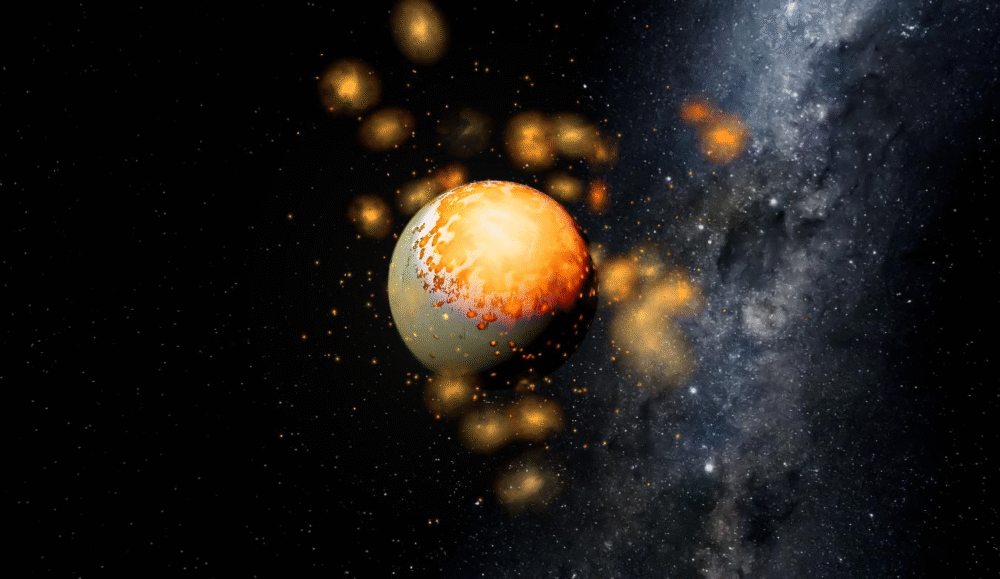
Credit: Southwest Research Institute
According to the study, Earth reached about 99% of its current size within 60 to 100 million years of the earliest solid materials forming in the solar system. The final 1% — delivered through late accretion — played a disproportionate role in shaping Earth’s unique geophysical and chemical features.
Why Late Collisions Matter
Late accretion isn’t just about adding a bit of extra material. These impacts:
- Heat and melt planetary interiors, potentially triggering convection or even creating global magma oceans.
- Strip or add volatiles such as water and carbon dioxide, profoundly changing a planet’s atmosphere.
- Reshape tectonics, influencing whether a planet develops plate tectonics or ends up with a stagnant crust.
- Affect magnetic fields by altering how the core cools and convects.
The review explains that differences in late accretion histories are likely why Earth, Venus, Mars, and Mercury have such distinct characters.
- Earth: Developed long-term plate tectonics, a stable atmosphere, and abundant surface water.
- Venus: Experienced higher-energy impacts that likely created a superheated core and intense, long-lasting volcanism.
- Mars: A large low-velocity impact could explain why its two hemispheres are so different, with one smooth and the other heavily cratered.
- Mercury: Its unusually high metal-to-silicate ratio may point to massive past impacts that stripped away much of its rocky mantle.
Venus and Its Superheated Core
One of the most fascinating findings comes from simulations of Venus’ impact history. Being closer to the Sun, Venus was hit by objects moving at much higher speeds than those striking Earth. SwRI-led modeling suggests some of these collisions were so powerful they could have melted up to 82% of Venus’ mantle.
This level of melting would not only have reset the mantle’s convection patterns, but also created a superheated core. With heat trapped below a shallow magma ocean, the planet would then undergo long-lasting volcanism, resurfacing itself again and again.
This helps explain why Venus, despite being Earth’s twin in size and composition, looks so different today. Instead of plate tectonics, it has a single stagnant plate, but its surface appears geologically youthful thanks to intense volcanic activity.
Impacts and Planetary Atmospheres
Collisions don’t just reshape rocks — they transform atmospheres.
- High-energy impacts can blow away a planet’s existing atmosphere, leaving it barren.
- Volatile-rich impactors can do the opposite, delivering carbon, nitrogen, and water that form the basis of habitability.
The abundance of volatiles such as water is closely tied to these late collisions. For example, Earth’s early atmosphere and oceans were strongly influenced by the timing and makeup of its impactors. On Venus, the combination of high-speed impacts and later greenhouse effects may have doomed the planet to its current hellish conditions.
These insights also matter for prebiotic chemistry. The materials and conditions delivered by late impacts may have set the stage for life on Earth, though how exactly this unfolded is still a mystery.
Lessons for Exoplanets
When astronomers search for Earth-like exoplanets, the checklist usually includes mass, radius, and whether the planet sits in the habitable zone. This research argues we need to add another line: collision history.
A rocky planet could have the right size and temperature, but if it experienced Venus-style high-energy impacts, its internal evolution and atmosphere may make it utterly uninhabitable. Conversely, a planet with a “gentle” late accretion history might develop long-term plate tectonics and water stability like Earth.
In short: two planets with the same mass and orbit could end up with completely different outcomes depending on how they were bombarded in their youth.
What About Mars and Mercury?
Mars provides another important example. Its northern hemisphere is low-lying and smooth, while the southern hemisphere is older and heavily cratered. Models suggest this may be the result of a giant low-velocity impact early in its history.
Mercury, on the other hand, has an outsized metallic core compared to its rocky mantle. One leading explanation is that massive collisions stripped away much of its outer rocky layers, leaving behind a planet that is mostly core.
These two cases highlight just how varied late accretion outcomes can be, even within one solar system.
Open Questions
Even though our understanding of late accretion has improved, several mysteries remain:
- Impact frequency and velocity: We still lack precise knowledge of how often and how fast large bodies struck the early planets.
- Fate of impactor material: How much stays behind, how much vaporizes, and how much escapes into space is still uncertain.
- Volatile delivery vs. loss: Did Venus lose its water due to high-energy collisions and runaway greenhouse conditions, or did it never accrete enough in the first place?
- Exoplanet applicability: How common are violent late accretion events in other planetary systems? Do most Earth-sized planets experience gentle or catastrophic impacts?
Upcoming missions to Venus, like NASA’s DAVINCI and VERITAS and ESA’s EnVision, could provide critical data by mapping surface geology, probing the interior, and analyzing atmospheric chemistry.
Extra Insight: Volcanism and Habitability
Volcanism might not sound like a recipe for habitability, but it actually plays a huge role. Active volcanoes:
- Release gases like CO₂ and H₂O into the atmosphere, which can stabilize climate.
- Drive geochemical cycles that recycle nutrients.
- Potentially support subsurface habitats for microbes, as happens on Earth around hydrothermal vents.
So when Venus’ impact history created a superheated interior that fueled volcanism, it profoundly influenced its trajectory. The trouble is that without plate tectonics to balance things, Venus ended up with a thick CO₂ atmosphere and runaway greenhouse conditions.
This dual role of volcanism — life-enabling under some conditions, life-sterilizing under others — is why understanding impact-driven interior heating is so important.
Beyond the Solar System
Astronomers are beginning to detect rocky exoplanets that could be Earth-sized and in the habitable zone. But size and distance from a star don’t tell the full story. If we want to identify truly Earth-like planets, we’ll need to factor in:
- Signs of tectonic activity or volcanism.
- Atmospheric composition, especially volatiles.
- Whether the planet shows evidence of catastrophic resurfacing events.
While we can’t yet directly observe an exoplanet’s collision history, models of planetary system dynamics can help estimate the likelihood of violent late accretion events. In time, this could become a key filter for narrowing down which planets deserve the closest look.
Conclusion
The story of Earth, Venus, Mars, and Mercury reminds us that planetary habitability isn’t just about where you are — it’s also about what happened to you along the way. The final scraps of growth, delivered through late accretion, may determine whether a planet ends up as a blue-and-green cradle of life, a volcanic hellscape, or a barren rock.
As scientists keep refining models and collecting new data from space missions, we may soon get closer to answering the question: how common are Earth-like worlds, really? And how many of them were lucky enough to have the “right kind” of planetary collisions?
Reference: The shaping of terrestrial planets by late accretions — Nature, May 2025
